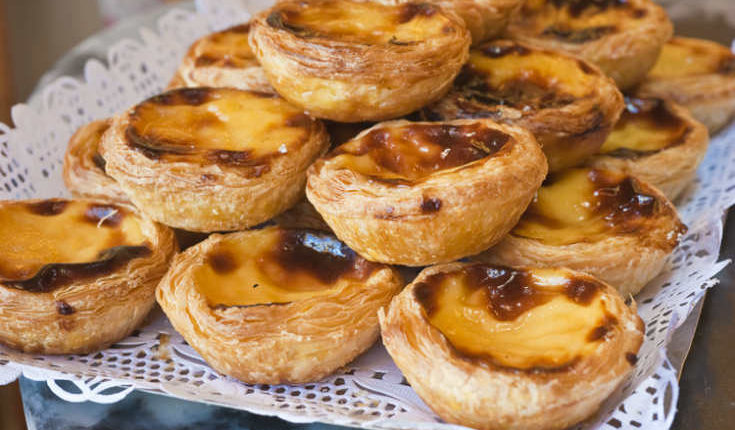The Portuguese Pastel de Nata is now a global brand Bloomberg tells us. It has even made an appearance, as the technical challenge, in 2017 on The Great British Bakeoff (TGBBO). But many of us don’t need to be told that the Pastel de Nata is popular, it is one of those delicious pastries that can be eaten at any time of the day (or night).
For those not in the know, the Pastel de Nata consists of egg custard encased in a crispy pastry, somewhere between filo and puff. A decade ago, you would have had to visit Portugal to try one however, they are now appearing in cafés, bakeries and supermarkets the world over.
Its history dates back to the beginning of the nineteenth century. As a means to survive financial problems at the time the shop at the monastery Mosteiro dos Jerónimos in Belém (Lisbon), made custard tarts which were so popular they quickly became known as Pastéis de Belém.
Belém was at that time far from the city of Lisbon but the monastery, with its gardens, together with the Torre de Belém (part of the Tagus river’s defence system) attracted visitors who savoured the custard tarts on sale.
The café known as Pasteis de Belém, found a short distance from the monastery, claims to be using the unchanged recipe that has been used since 1837. Every day the master confectioners follow the recipe offering visitors the opportunity to enjoy what is now a world-renowned Portuguese delicacy.
To quote a viewer of TGBBO, “The monastery at Belem. I don’t remember any of that stunning Renaissance architecture and history. I remember the softness of the sugar, profound crisp of pastry, and the luxuriance of the custard ocean inside.”
Image courtesy of visitlisboa.com


3 thoughts on “Portuguese custard tarts”